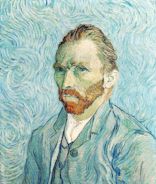|
After answering all these questions and getting some clear idea into your mind I usually ask if there us any role the sitter might like to play? What historic figure does he or she admire the most? The prospect of painting a man in a plain suit and tie or a woman in a business suit apalls me. Where is the joy in that? Portraiture can have elements of narrative, tools of trade, costume etc. Anything is possible. Painting a portrait of a carpenter(workshop, tools, apron), airline pilot(plane, sky, uniform) or architect(building, drawing board, blueprints) is obvious, but think of the possibilities for an insurance salesman, banker, used car dealer or school teacher. There lies the greater challenge - and the greater rewards. This is where portraiture can, and should, and does transcend photography. The sitter must also be encouraged to imagine ... and believe.
History teaches us a masterpiece makes the sitter famous. We refer to the Mona Lisa, Mrs Siddons or the bust of Madame Houdon often before we nominate the artist. Who were these people? Who was the Mona Lisa and what was her life? Make this point to your sitter or client as it is to future generations that the work will be presented, and it is to them the spirit and life and history of the sitter must be addressed.
Practical considerations:

Physical likeness - for me this is probably the most enjoyable - if you follow some simple rules and ask yourself and others the questions the cartoonist asks himself every day. Silently ask yourself (in the presence of the sitter) what are the most distinguishing characteristics. Then ask yourself the same question later in with the sitter absent. Try and remember some aspect of the person like thick eyebrows, wavy hair, big ears etc.. Also try and remember a mannerism like, a pose, smile or use of hands; finally return to the sitter and experiment with some sketches. If nothing happens don't despair just keep trying and make some more simple sketches to help you. If all this doesn't work start your painting regardless!
The eyes - I make it a point of detailing the eyes (above in the portrait of Fletcher Christian as a young man). The eyes are the gateway to the visual world both for the viewer and the sitter. They must be as fine and detailed as you can achieve (unless the sitter is shy and for some reason seems to avoid looking directly).
A few hints: widen the iris to give a more open and generous face. Add some flesh color to the whites and paint them as if they were pearls. They must appear round. Be subtle with the highlights. One eye is not the exact replica of the other. Make them a little different.
The hair - the hair usually separates the head from the background and should not be overworked. Only some small area showing some individual hair will suffice for an overal hairy effect.
The mouth - if the eyes are the visual gateway, the mouth could be said to be the emotional one - the enigmatic smile for instance. If the mouth does not obviously describe the sitters emotional disposition then the viewer is forced to look to the eyes. It is the trick of the Mona Lisa. Leonardo will not allow the viewers eye to settle. He keeps asking the question. Be careful with the little angles at the corners of the mouth - 45 degrees is the default.

The hands - adding the third element to the 'non-description' of the Mona Lisa are the hands - also in repose. No clue there either.

Note how, in creating substance, Leonardo does not define many edges - neither on the hands or the face.
The costume - sometimes I paint the costume before the hands, face and anything else. Then I save up my joy for later when detailing the folds, jewellery adornments etc. That part is relaxing and doesn't require the absolute concentration needed for flesh.
The background - here you can tell your story or make your narrative. For best practical results try and echo all the colors you have used for the flesh tones and costume in the background - just echoes in
hue not value. Use value to make the narrative. See lesson on turning points.
A cautionary tale for the discerning student about two Dutch artists and what was fashion!

Two brilliant dutch artists born 300 years apart - one whose work was appreciated and the other shunned, one who lived in luxury and the courts of kings while the other lived in poverty, one whose art provided happiness and security while the others' sent him mad. Who would say one was a better artist? Here I have combined two famous portraits to make the one. I wonder, had they changed places, how then would they have painted?


DRAWING WITH PAINT AND THE INSIDE OUT AND OUTSIDE IN TECHNIQUES
|
|
Inside out:
When painting a head and shoulders portrait I usually establish the rough proportions of the sitter by way of freehand line. I plan the future positions of the areas of maximum contrast and interest. Next I paint the eyes mouth and nose. In other words I work from inside the overal shapes. As I reach the boundaries I find they often suggest themselves. Some I might like to edge or define while others I let fade away. In general it is appropiate to paint inside out if the figure inhabits more than 50% of the canvas and outside in if it is less.
Outside in - in painting a 'genre' picture or mural (small figures in a large painting) I carefully draw the shapes and figures and fill them in rather like (cartooning) painting an ancient fresco. My drawing in such circumstances must establish a rhythm and place (reality).
|
STUDENT ACTIVITY: As I used the Mona Lisa to discuss the relationship between hands, mouth and eyes the student should find another example and do the same. Also find the derivation of the word 'cartoon'. Allow 40min.
|